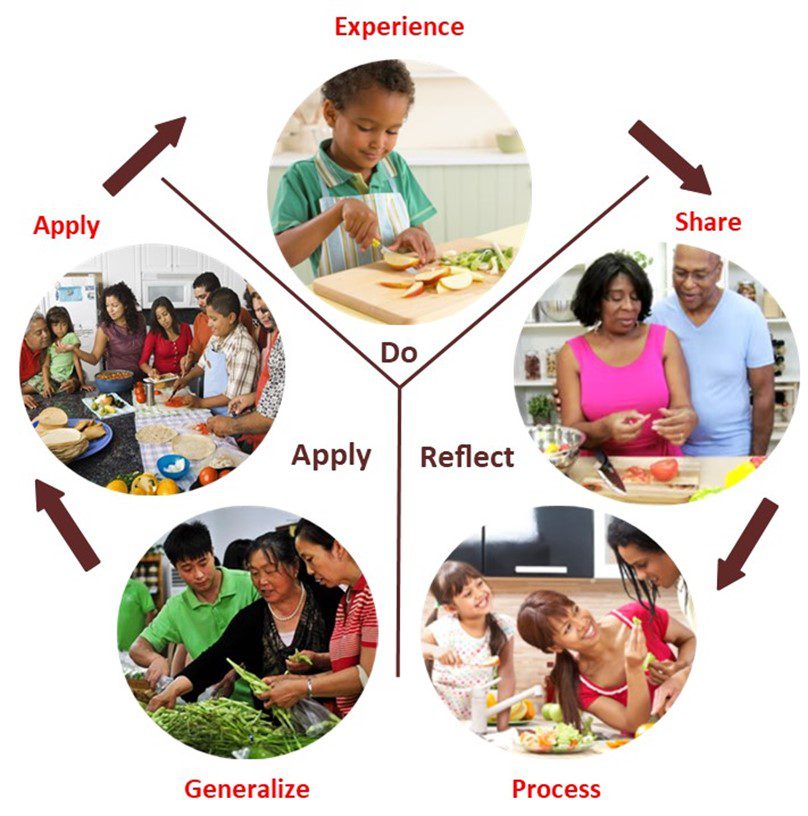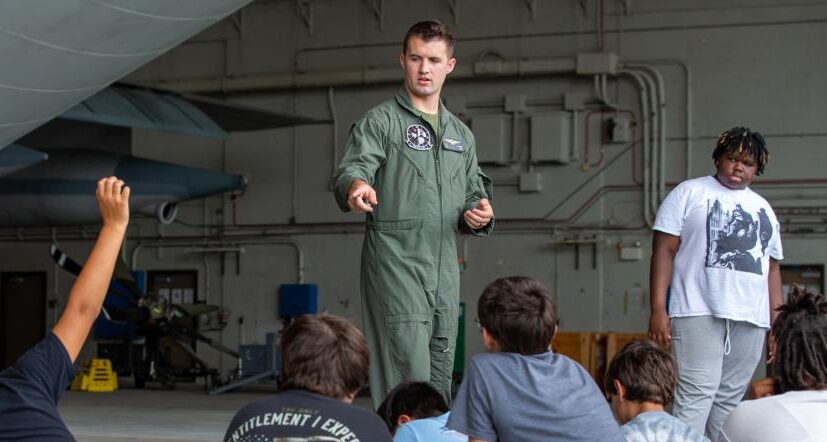By: Jessica Pierson Russo
From John Dewey’s Experience and Education (1938), to David Kolb’s interpretation of Dewey’s and others’ theories in Experiential Learning (1984), the approach of experiential learning has long been a staple in both adult education and the youth development fields. It remains my own go-to approach to teaching youth. I’ve found that if done right, experiential learning brings out the joy and satisfaction of learning. But what do I mean by “done right?”
Experiential learning is more than just a hands-on approach to learning. For one thing, experiential learning doesn’t always mean physically using your hands. Learning can be just as fun and effective when engaging in a discussion as when playing a game or making muffins. On the flip side, any of these experiences feel empty if we don’t engage ourselves in some thought and action to help bring out the learning.
At its core, experiential learning involves making connections. The facilitator helps the learner make these connections using the process depicted in Figure 1. If we don’t do this, the learner is on their own to make their own connections…or not. Here’s what I mean.
Experiential Learning: A Deeper Dive

Figure 1. 4-H Experiential Learning Model (adapted by the author)
Experience
The experiential learning model begins with providing a learning experience focused on the desired topic. In the context of facilitating, this means two things. First, and most importantly, it involves bringing in the learner’s previous experience with the topic being taught. Second, it involves the learner engaging with the topic at hand.
Our previous experiences with a topic are important, because it’s through our past experiences that we find the context for building new connections. These connections make the learning stick. Without them, we’re likely to forget the experience. Connecting a new activity to past experiences also makes this activity more engaging for the learner.
Reflect and Share
Once we make a connection to past learning experiences and engage in the activity at hand, we reflect upon and think about the experience as it’s happening. These reflections help us better understand the results and our reactions to them.
Learning further occurs as the learner shares their results and reactions with others. Sharing helps them process the experience so they can see any discrepancies between their understanding and the experience itself.
Generalize and Apply
The facilitator continues to enable connections by helping the learner generalize the experience—to put it into context with the world around them. The facilitator asks: Where else have you experienced or seen this or known this to be true? If not from your own knowledge or experience, what’s the potential?
This stage of the learning cycle can often be the most exciting. The learner starts to wonder and predict, and to see and understand how the topic connects or could connect to their understanding of the world.
And finally, the learner needs to be able to apply what they’ve learned, to try out their new knowledge — to take action. This is the ultimate state of connection for the learner and when the learning comes to light and becomes part of their overall experience. It’s also often when they form new questions, which can lead to new experiences as they strive to find answers.
Going Further
How to put all this into practice is a topic for another blog post. For now, I’m interested to know what part of this have you not contemplated before? What would you add to the discussion about what effective experiential learning is?
In the meantime, here is a resource from the University of Minnesota Extension Center for Youth Development to learn more about experiential learning. This resource, the Experiential Learning Guide, targets youth as learners but much of the information also applies to adult learners.
References
Dewey, J. (1938). Experience and Education. New York: Macmillan Company.
Stevenson, A., Santl, K., and Gilbertson, A. (2019). Experiential Learning Guide. University of Minnesota Extension. ISBN: 281000008462B.
Kolb, D.A. (1984). Experiential learning: experience as the source of learning and development. Englewood Cliffs, NJ: Prentice Hall.
About the Author

Jessica Russo
Jessica Russo, Extension Educator, Youth Development
Email: [email protected]
Photo Credit: DVIDS Lance-Cpl-Symira-Bostic















